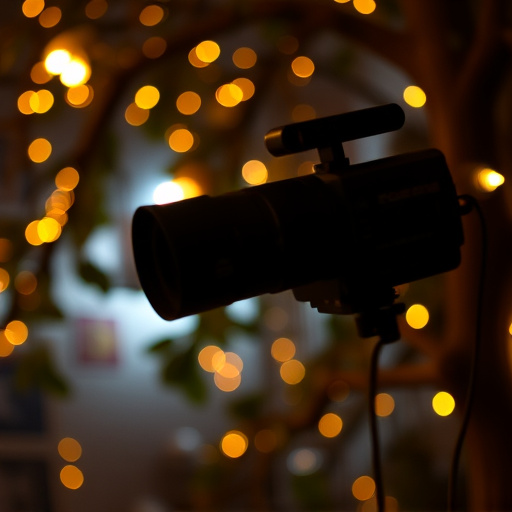Battery-powered covert nanny cameras have evolved into sophisticated, hard-to-detect devices for discreet surveillance. They can be easily hidden in everyday objects and operate without external power sources. Detecting these cameras requires specialized tools like RF detectors and thermal imaging cameras. Scanning for radio frequency (RF) signals is effective, as advanced detectors can uncover unusual or unauthorized emissions. Balancing security with ethics is crucial; using detection tools responsibly involves staying within legal limits, obtaining consent, and respecting privacy rights to avoid creating an atmosphere of unease.
Uncover hidden threats with our comprehensive guide on detecting battery-powered covert nanny cameras. In today’s digital age, privacy is paramount. This article equips you with essential knowledge to identify these concealed devices, focusing on radio frequency (RF) detection methods and tools. Learn how to pinpoint RF signals, ensuring your safety and peace of mind. We also explore precautions and ethical considerations, emphasizing responsible use.
- Understanding Battery-Powered Covert Nanny Cameras
- Detection Methods: Tools and Techniques
- Identifying Radio Frequency (RF) Signals
- Precautions and Ethical Considerations
Understanding Battery-Powered Covert Nanny Cameras
Battery-powered covert nanny cameras have become increasingly sophisticated, making them harder to detect. These tiny devices are designed to operate discreetly, often using long-lasting batteries that allow them to remain active for extended periods without drawing attention. They can be easily hidden in everyday objects like clocks, smoke detectors, or even plant pots, making it challenging for the untrained eye to spot them.
These cameras are a popular choice for covert surveillance due to their portability and ease of setup. The battery power ensures they can be strategically placed and left to monitor activities without requiring an external power source, making them particularly useful in situations where discreteness is paramount.
Detection Methods: Tools and Techniques
Detecting hidden cameras, especially battery-powered covert nanny cameras, requires a combination of specialized tools and techniques. One of the primary methods involves using RF (radio frequency) detectors designed to pick up signals from active devices. These detectors can be handheld or portable, making them convenient for comprehensive searches in homes, offices, and other spaces. They work by scanning through various frequency bands to identify unique signatures emitted by hidden cameras, ensuring a thorough examination.
Additionally, thermal imaging cameras play a significant role in this process. By capturing heat patterns, these devices can reveal hidden objects that might be impossible to spot with the naked eye. This technique is particularly useful for detecting batteries and other components that generate heat, helping users pinpoint the location of covert cameras. Together, RF detectors and thermal imaging form a robust toolkit for professionals tasked with locating battery-powered hidden cameras in various settings.
Identifying Radio Frequency (RF) Signals
Detecting hidden cameras, especially battery-powered covert nanny cameras, relies heavily on identifying radio frequency (RF) signals. These tiny devices often operate on specific RF bands, making them detectable with the right equipment. By scanning for unusual or unauthorized RF emissions, individuals can uncover hidden surveillance devices.
Advanced detectors can pick up on subtle variations in RF signals, indicating the presence of a camera. This process involves using specialized tools to monitor frequency ranges commonly associated with covert cameras, such as those found in consumer electronics and security devices. With practice, users can learn to recognize these signals, even when they are broadcasting at low power, making it possible to identify and neutralize hidden cameras effectively.
Precautions and Ethical Considerations
When detecting hidden cameras, particularly battery-powered covert nanny cameras, it’s crucial to balance practical measures with ethical considerations. Precautions should be taken to ensure privacy and respect for personal space during any search or investigation. Using advanced RF (radio frequency) detection tools can help identify these hidden devices, but it’s essential to adhere to legal boundaries and obtain necessary consent before deploying such technology.
Ethical implications extend beyond legal requirements. Respecting individuals’ right to privacy is paramount, especially in public spaces. The use of covert cameras for surveillance raises serious ethical questions, and their presence can create an atmosphere of unease. Therefore, it’s vital to approach the detection process with sensitivity, transparency, and a commitment to using technology responsibly and proportionately.
In conclusion, detecting hidden cameras, particularly battery-powered covert nanny cameras, requires a combination of technical expertise and ethical awareness. Understanding the latest detection methods, such as identifying radio frequency (RF) signals, is crucial for safeguarding privacy in today’s digital era. By staying informed about these advanced technologies, individuals can take proactive measures to protect their personal spaces. Always remember that while vigilance is essential, respecting privacy laws and ethical considerations is paramount when employing any detection techniques.
